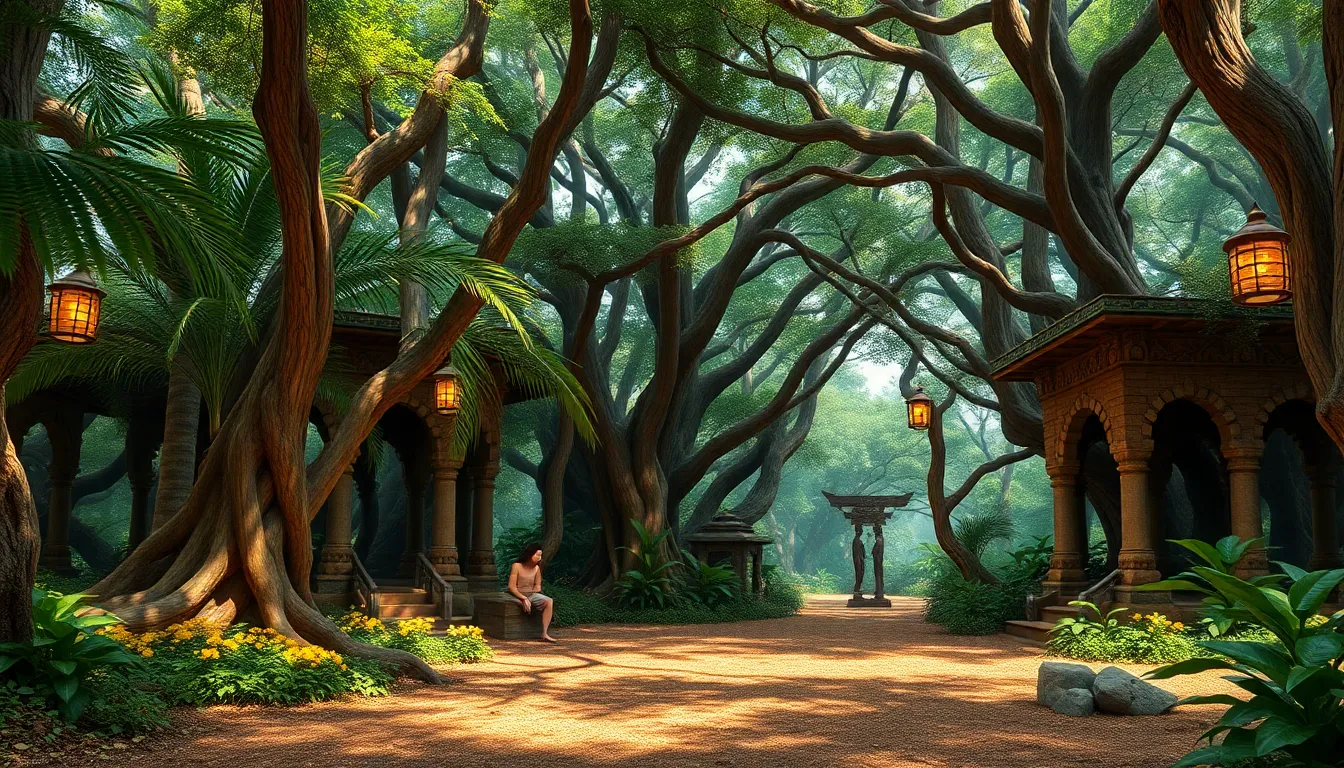The Festival of the Sacred Grove: Nature’s Celebration
I. Introduction
The Festival of the Sacred Grove is a vibrant celebration that honors the natural world and the sacredness of the groves that have long been revered in various cultures. This festival underscores the significance of nature in cultural celebrations and acts as a reminder of humanity’s connection to the earth. The purpose of this article is to explore the historical origins, key rituals, cultural significance, and modern interpretations of this festival, as well as the challenges it faces in today’s world.
II. Historical Origins of the Festival
The Festival of the Sacred Grove has roots that trace back to ancient practices and beliefs associated with nature. Early civilizations often regarded groves as sacred spaces, where the divine presence was believed to dwell. These sites were not only places of worship but also served as gathering spots for community celebrations.
Over the centuries, the festival has evolved through various cultures and eras, adapting to the changing beliefs and practices of the people. In many ancient societies, such as the Egyptians, Celts, and indigenous peoples, the groves were central to their spiritual lives, and festivals were held to honor the deities believed to inhabit them.
Key figures and legends related to the festival’s inception include:
- The goddess of nature, often depicted as a nurturing figure.
- Mythical heroes who are said to have discovered or protected sacred groves.
- Legends of creation that emphasize the importance of nature in human existence.
III. Key Symbols and Rituals
At the heart of the Festival of the Sacred Grove are the sacred groves themselves, which are considered vital to the spiritual and ecological balance of the surrounding environment. These groves are often dense with trees, plants, and wildlife, creating a unique atmosphere that fosters reverence and contemplation.
During the festival, various rituals are performed to honor the earth and its bounty. Common rituals include:
- Planting trees and flowers to symbolize renewal and growth.
- Lighting bonfires to represent purification and the cycle of life.
- Offering food and gifts to the spirits of the grove as a sign of respect.
The symbolic elements of the festival encompass a range of flora, fauna, and natural phenomena. For instance, specific plants may be used in rituals for their medicinal properties or symbolic meanings, while animals are often honored through storytelling and art.
IV. Cultural Significance and Community Involvement
The Festival of the Sacred Grove plays a crucial role in fostering community bonds. It brings together individuals from various backgrounds to celebrate a shared appreciation for nature. This communal aspect is often expressed through diverse cultural expressions, including:
- Art, such as paintings and sculptures inspired by nature.
- Music that incorporates traditional instruments and nature sounds.
- Dance performances that mimic the movements of animals or the growth of plants.
Participation from local and indigenous groups is vital to the authenticity and richness of the festival. These communities often share their unique perspectives and practices, enhancing the overall experience and preserving their cultural heritage.
V. Environmental Awareness and Conservation Efforts
In recent years, the Festival of the Sacred Grove has placed a strong emphasis on ecological stewardship. The festival serves as a platform for raising awareness about environmental issues and the importance of conserving natural habitats. Various initiatives have been launched to protect sacred groves, including:
- Restoration projects aimed at rehabilitating damaged ecosystems.
- Campaigns to educate the public about the significance of biodiversity.
- Collaborations with environmental organizations to promote sustainable practices.
Educational programs and workshops are often organized during the festival, providing attendees with knowledge about local flora and fauna, as well as practical ways to engage in conservation efforts.
VI. Modern Interpretations and Celebrations
Contemporary societies have embraced the Festival of the Sacred Grove, adapting it to fit modern lifestyles while maintaining its core values. Celebrations today may include:
- Community gatherings featuring local food and crafts.
- Workshops that teach traditional crafts or sustainable gardening.
- Virtual events that reach a global audience through technology.
Social media plays a significant role in promoting the festival, allowing people to share experiences, photos, and messages of environmental stewardship. Global adaptations and variations of the festival can be seen in different countries, each adding unique cultural flavors while honoring the essence of nature.
VII. Challenges and Controversies
Despite its positive impact, the Festival of the Sacred Grove faces several challenges and controversies. Issues include:
- Commercialization, which can dilute the festival’s cultural significance.
- Cultural appropriation, where elements of the festival are used without respect for their origins.
- Environmental threats, such as deforestation and climate change, that impact sacred groves.
Balancing tradition with modernity is also a delicate task for organizers, as they strive to maintain the festival’s authenticity while appealing to contemporary audiences.
VIII. Conclusion
The Festival of the Sacred Grove remains an enduring celebration of nature’s beauty and bounty. It serves as a reminder of the importance of preserving our natural environment and cultural heritage. As we reflect on the festival’s significance, it is crucial to take action to protect our sacred spaces and promote ecological awareness.
In conclusion, the Festival of the Sacred Grove not only celebrates the wonders of nature but also fosters community spirit and encourages conservation efforts. It is a call to honor the earth that sustains us and to continue celebrating the interconnectedness of all living beings.




